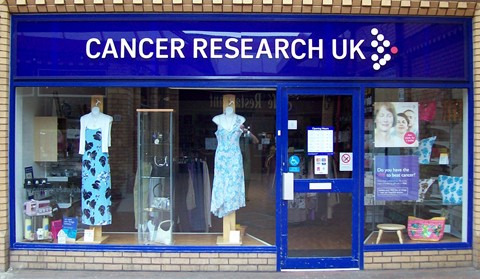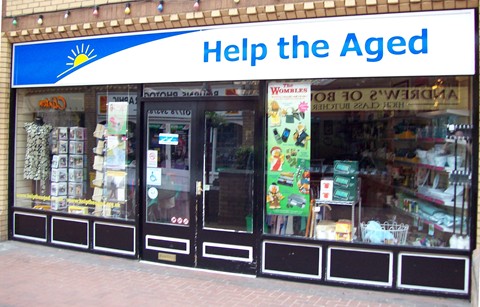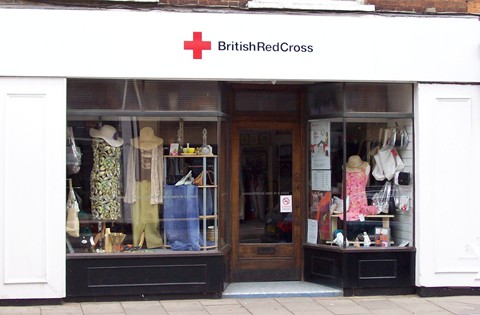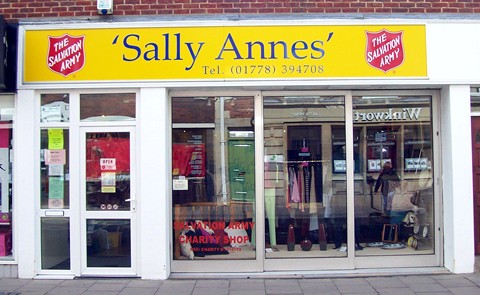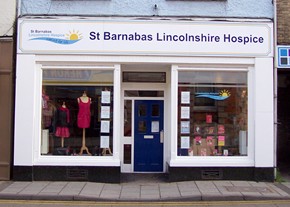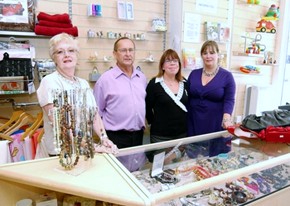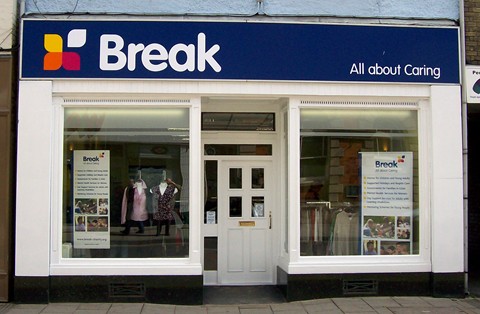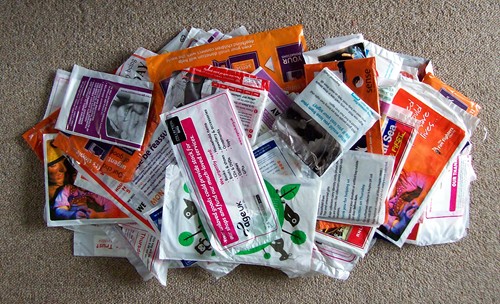|
Charity shops
The busiest shops in Bourne are undoubtedly those owned by the charities because they always seem to be full of customers and their stock is ever changing. It is here that you can invariably find something you might need because the shelves are full of items unwanted by its original owners while the racks are crammed with clothing and as most garments have the near-new look, you can imagine them being bought from a superior store but once unpacked at home, discarded because they perhaps lacked that original appeal which prompted the impulse purchase. There are books aplenty, mostly airport bodice rippers by the likes of Jilly Cooper, DVDs and video tapes with various copies of Friends in abundance, picture frames, pottery and porcelain, glass and metalwork. There was a time when this ever changing stock provided rich pickings for anyone with a working knowledge of antiques but those days have gone because everything brought in is now carefully checked by experts to ensure that a Lalique vase, a Baccarat paperweight or even a rare boxed Dinky toy does not slip through for a few pence. Bargains may be had here but you will not buy something cheap that will later net you a fortune in the auction room or on eBay. Charity shops are now significant occupiers of the High Street in Britain and are fast becoming familiar sites of consumption in the United States, Australia, Canada and Ireland. They act as important fund raisers of their parent charities and have a much longer history than most people realise.
Their origins can be traced back to the late 19th century and in 1890, William Booth, founder of the Salvation Army, wrote in his book Darkest England and the Way Out, about the crisis in social conditions of the working classes of the time and suggesting that there was a large amount of wastage of goods in affluent homes that might be channelled to the less well off and he organised teams to collect them and sell them on through salvage stores in London and other centres. From these small beginnings, the charity shops we know today were born. Oxfam became one of the first to open them in the years following the Second World War of 1939-45 closely followed by the Sue Ryder Foundation and other organisations were quick to catch on. Never have these shops thrived so much as today when they even have their own trade organisation, the Charity Retail Association, with 350 members running 7,0000 outlets between them and generating £200 million a year in profit. The advantage of running charity shops is that the owners pay only 80% of the business rate while stock costs little or nothing because most of it is donated and apart from a salaried manager, the bulk of the staff are voluntary workers, giving their time free for the good of the cause. Those operating in Bourne in October 2011 were: Cancer Research UK - Burghley Arcade
The first three were old established but
the Salvation Army opened in June 2008, taking over premises formerly occupied by
an estate agent who closed as a result of the current downturn in house buying
while the St Barnabas Lincolnshire Hospice is the latest addition which
opened in 2011. Is this
a sign that public spending is on the ebb and that customers are cutting
their cloth to fit their requirements? One needs only to stand outside and
watch the comings and goings to realise that this is a phenomenon that has
become unstoppable because charity shops which were once given premises
free of charge in that interim period between lettings have now become
paying tenants in prime locations at the going market rate.
Unfortunately, they do not please everyone and when the Salvation Army announced the opening of its new shop there was an unenthusiastic response from the Bourne Chamber of Trade and Commerce. "We have enough charity shops in the town", said chairman Jane Good. "There are already three, all in prime shopping positions, and that is ample for a small place like this. The Salvation Army is a commendable organisation but we do not need another charity shop. What we do need is more outlets with choice and variety." The Salvation Army pointed out that their previous shop had already been running for ten years from their headquarters in Manning Road which is well outside town but they had decided to move to a more central location and were advertising for a commercial manager with previous retail experience at a salary of £11,750 a year to take over the running. A spokesman said: "We are moving to meet people's needs. The more charity shops there are in town the better".
There was similar enthusiasm at the opening of Break charity shop and wedding boutique in North Street in 2009 which was even attended by the Mayor of Bourne, Councillor Shirley Cliffe, thus giving the venture civic approval. "It is nice that we have some empty shops being taken over", she said. This enthusiasm did not last, however, because the shop closed and the stock moved to the Holbeach branch in the autumn of 2010. The premises were taken over the following year by the St Barnabas Lincolnshire Hospice, a charity providing services for the terminally ill. Caroline Peach, a charity official said: “The branch in Bourne has become our best looking shop. It will sell a bit of everything with a focus on high end fashion to bring a bit of glamour to the town centre. It has been well received from the start and we hope it will attract a lot of money for the charity to enable us continue our services in Bourne and the surrounding area.” All of the shops appear to be doing brisk business, despite the unlikelihood of picking up something of real value missed by the staff, a situation beloved of the many antique auctions on television, while the prices in some of them are not always as low as one would expect and there is a risk that they could lose their appeal through a glut of outlets and a desire to make excess profits.
REVISED AUGUST 2012 NOTE: Acknowledgments to Charity shops - Retailing, consumption
and society See also The Salvation Army
Go to: Main Index Villages Index
|
